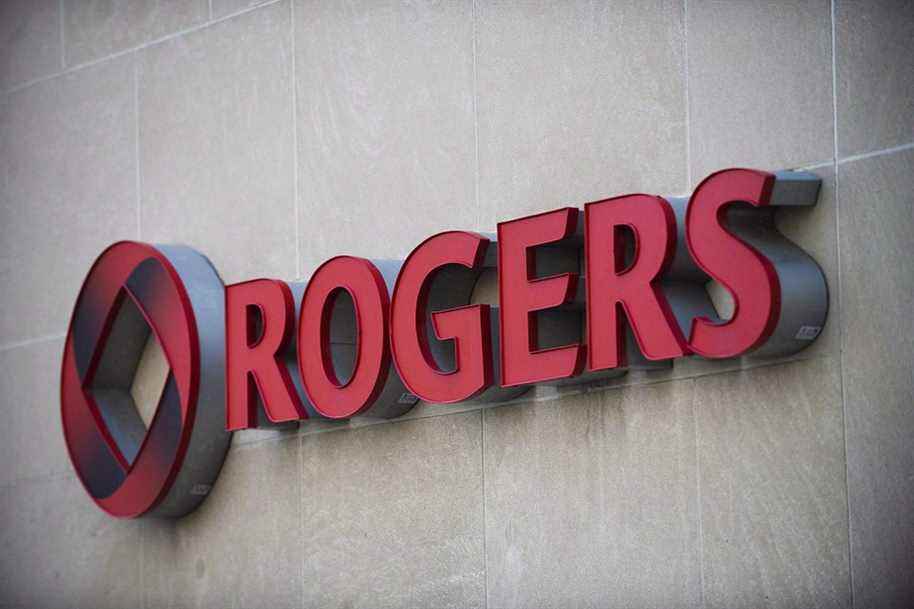(Toronto) Rogers Communications raised its full-year guidance and said it is on track to complete its $26 billion takeover of Shaw Communications by the end of the quarter.
Posted at 2:09 p.m.
Rogers Communications on Wednesday posted a profit of 392 million for its first quarter, against 361 million a year earlier.
Rogers Chief Executive Tony Staffieri said the company was raising its guidance to reflect its improved outlook after delivering strong results across all of its businesses.
“We are very optimistic about our outlook, given the exceptional quality of our assets and the dedication of the Rogers team,” said Staffieri, who assumed the CEO role earlier this year, in a statement. year, after a battle for control of the board of directors, where members of the Rogers family found themselves pitted against each other, which resulted in the departure of former CEO Joe Natale.
The Toronto-based communications company raised its forecast for total services revenue growth in 2022. The company now expects growth of 6% to 8% this year, up from an earlier forecast of growth of between 4% and 6%.
The company also raised its expectations for earnings before interest, taxes, depreciation and amortization (EBITDA). They are now expected to increase by 8% to 10% compared to earlier forecasts of growth between 6% and 8%. These figures match those of Telus and are higher than those of BCE, which are 2% to 5%.
Free cash flow for the year is now expected to be between $1.9 billion and $2.1 billion, up from the previous forecast of between $1.8 billion and $2.0 billion.
Desjardins analyst Jérôme Dubreuil said it was unusual for telecommunications companies to raise their outlook so early in the year. This reflects increased visibility of activities by management in a context of reopening, he said.
The telecommunications company said its net earnings per share were 77 cents for the quarter ended March 31, compared with 70 cents in the first three months of 2021.
Revenues totaled 3.62 billion, compared to 3.49 billion a year earlier.
Rogers noted that the increase came as wireless revenues grew 7% in the quarter, primarily due to higher roaming revenues associated with more travel, as COVID-19 travel restrictions have eased.
A larger subscriber base for postpaid mobile phone services also contributed to the increase.
Wireless equipment revenue meanwhile fell 10%, driven by a decline in the number of device upgrades by existing subscribers and a decline in the number of new subscribers purchasing devices .
Cable services revenues increased 1%, while media revenues increased 10%, boosted by higher sports-related revenues.
On an adjusted basis, Rogers said it earned 91 cents per share for the quarter, up from adjusted earnings of 77 cents per share a year earlier.
Acquisition of Shaw
During the company’s earnings call, an analyst asked about an article in the Globe and Mail that Rogers presented a deal to the federal government that would see Xplornet Communications, a Canadian rural internet provider, acquire Shaw-owned wireless service provider Freedom Mobile.
It is expected that Shaw will have to sell its Freedom assets as a requirement of the deal’s regulatory approval.
“We’re not going to comment on rumors that are circulating,” Staffieri said on the call.
Some analysts, however, see the news as a good sign for the deal overall.
“This represents another important step towards the approval of the merger,” said Mr. Dubreuil.
On the call, Rogers added that it has begun working with its suppliers and is beginning to prepare management for the merger, although it is still awaiting certain regulatory approvals. Rogers also clarified that it was still targeting $1 billion in cost synergies two years after the deal closed.
In March, the Canadian Radio-television and Telecommunications Commission (CRTC) approved the transfer of broadcasting services from Shaw to Rogers. Rogers said Wednesday that the Rogers and Shaw teams “(continue) to work constructively with the Competition Bureau and Innovation, Science and Economic Development Canada to ensure they have the information they need to assess the significant benefits that the combined company will bring to Canadians and the Canadian economy”.
